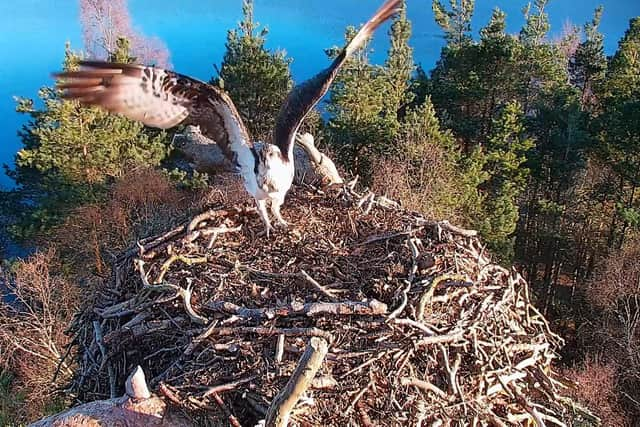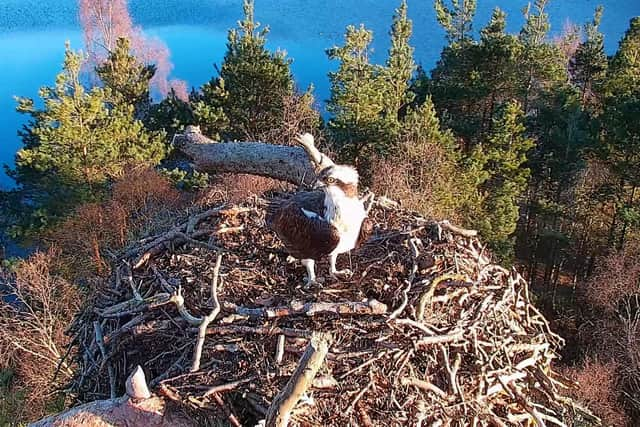Male osprey returns to Perthshire nest for 10th year after epic flight from Africa
The male named LM12, affectionately known as Laddie, landed at Loch of the Lowes wildlife reserve, near Dunkeld at around teatime on Sunday.
His appearance was captured on film through a webcam trained on the nest, where it’s hoped he will help raise a new brood of chicks this year.
Advertisement
Hide AdAdvertisement
Hide AdLM12 first set up home at the Perthshire reserve, which is run by the Scottish Wildlife Trust, in 2012.


He has fathered and helped successfully raise 15 chicks over the past decade.
Last year he paired up with a female named NC0, a newcomer to the site, for the time, fledging a single chick.
His previous mate had been LF15, dubbed Lassie, since 2015, and the pair successfully brought up a total of ten chicks together.
His first ever mate was a legendary bird called Lady, who returned to Loch of the Lowes for 24 years in a row.


She was considered a wildlife phenomenon, having produced a record-breaking 71 eggs and fledging 50 chicks in her lifetime.
Despite the long flight, Laddie has wasted no time in starting to sort out the nest, moving sticks and twigs around in preparation for a potential mate.
Sara Rasmussen, Perthshire ranger for the Scottish Wildlife Trust, said: “After weeks of preparation we’re thrilled to see LM12 back at Loch of the Lowes.
Advertisement
Hide AdAdvertisement
Hide Ad“As soon he arrived he spent time perching in his favourite haunts and beginning to rearrange the nest – it’s almost as if he has never been away.
“We’re keeping our fingers crossed that his mate NC0 will appear in the next few days.”
Ospreys were extinct in the UK for much of the 20th century.
They began to recover in the 1960s, and now an estimated 300 pairs of ospreys breed here each summer.
The birds migrate thousands of miles to West Africa for winter, flying up to 270 miles a day, then return to Scotland each spring to breed.
The Scottish Wildlife Trust’s Osprey Protection Programme is supported by the players of People’s Postcode Lottery.
Will Humpington, advisor for climate change and environment at People's Postcode Lottery said: “The Scottish Wildlife Trust does a fantastic job protecting ospreys at Loch of the Lowes and helping the public to understand the lives of these amazing birds of prey.
“We’re delighted to hear that another osprey season has begun at the reserve. I look forward to following the nesting season on the Trust’s live webcam.”
Advertisement
Hide AdAdvertisement
Hide AdThe Scottish Wildlife Trust is Scotland’s leading nature conservation charity, representing over 40,000 members who care for wildlife and the natural environment.
The charity manages a network of around 120 nature reserves across Scotland and is a member of the UK-wide Wildlife Trusts movement.
Loch of the Lowes visitor centre is currently closed to the public due to coronavirus restrictions, but nature-lovers can keep an eye on what’s happening at the roost via a live webcam.
A message from the Editor:
Thank you for reading this article. We’re more reliant on your support than ever as the shift in consumer habits brought about by coronavirus impacts our advertisers.
If you haven’t already, please consider supporting our trusted, fact-checked journalism by taking out a digital subscription. Visit https://www.scotsman.com/subscriptions now to sign up.
Comments
Want to join the conversation? Please or to comment on this article.